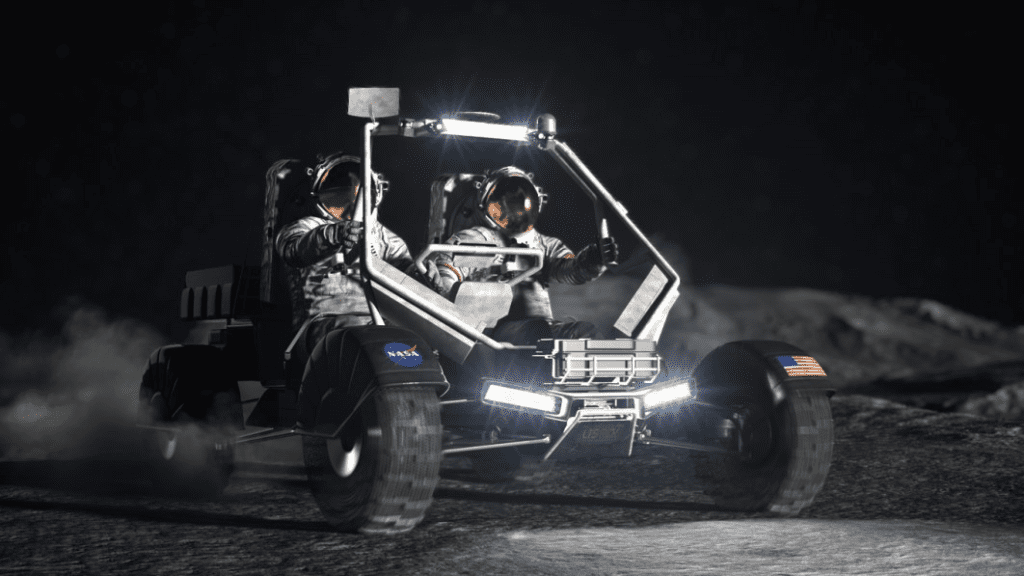Does driving 9 mph feel faster on the moon? Ask NASA in 2030

Presuming that our government hasn’t yet established a DMV office on the moon, we guess that it’s okay for NASA to proceed with plans that will further encourage astronauts to once again drive on and around the lunar surface without a moon license.
This past week, the space agency revealed that it is seeking proposals from three companies about how each would design and build an L.T.V. — lunar terrain vehicle — to transport astronauts in their future exploits and explorations of the moon, perhaps as soon as 2030.
“Where it will go, there are no roads,” Jacob Bleacher, the chief exploration scientist at NASA, said at a news conference on Wednesday. “Its mobility will fundamentally change our view of the moon.”
Added Vanessa Wyche, director of NASA’s Johnson Space Center in Houston, “We look forward to the development of the Artemis generation lunar exploration vehicle to help us advance what we learn at the moon. This vehicle will greatly increase our astronauts’ ability to explore and conduct science on the lunar surface while also serving as a science platform between crewed missions.”
Among the required specifications for the “vehicles” is that they be autonomous, because when the humans are finished with the trek, the L.T.V.s will remain on the planet to do “robotic” exploring.
The “cars” — a rendering is pictured above — will certainly be electric, able to travel at speeds of about nine miles per hour, and cover a dozen miles, or eight hours on the roads (or whatever), on a single charge
The companies asked to offer plans are Intuitive Machines of Houston, which in February successfully landed a robotic spacecraft on the moon; Lunar Outpost of Golden, Colo.; and Venturi Astrolab of Hawthorne, Calif. Only one of the three will actually build vehicles for NASA and send them up.
According to the space agency, the L.T.V. contract will be worth up to $4.6 billion over the next 15 years — five years of development and then a decade of operations on the moon. Unlike in the past, the company picked to build the L.T.V. will own it. Previously NASA kept the hardware. Going forward, the builder will be able to “rent” the goods when the agency isn’t using them.
The idea of moon mobility is not new. In the early 70s — specifically, July of 1971 — the lunar rover, launched as part of Apollo 15, made its debut run on the moon, driven by Dave Scott and Jim Irwin. It was battery-powered and built by Boeing and General Motors.
Automotive manufacturers will be involved with at least two of the prospective partners, the New York Times said. The Intuitive Machines team includes Michelin as well as Boeing and Northrop Grumman. Lunar Outpost would work with Goodyear and General Motors, which had helped to design the Apollo moon buggies.



